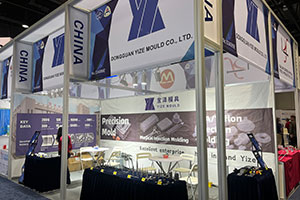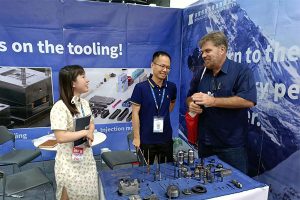Analysis of the Manufacturing Process of Tungsten Carbide Dies
In the mold manufacturing industry, tungsten carbide dies hold a pivotal position due to their outstanding characteristics, including high hardness, excellent wear resistance, and high red hardness. The manufacturing process […]
In the mold manufacturing industry, tungsten carbide dies hold a pivotal position due to their outstanding characteristics, including high hardness, excellent wear resistance, and high red hardness. The manufacturing process of tungsten carbide dies involves multiple crucial steps, ranging from material selection to the final quality inspection and acceptance. Each step is closely interconnected and indispensable. Next, this article will elaborate on the manufacturing process of tungsten carbide dies.
I. Precise Material Selection: Laying a Solid Foundation
Material selection is the first and most vital step in the manufacturing of tungsten carbide dies. There is a wide variety of tungsten carbide materials, with common types such as W18Cr4V, W6Mo5Cr4V2, and W18Cr4VCo5, each having distinct performance characteristics. When selecting materials, it is essential to comprehensively consider various factors, including the specific application of the die, its working environment, and processing requirements. For instance, for dies that need to withstand high impact and severe wear, it is necessary to choose tungsten carbide materials with higher hardness and better wear resistance to ensure the die can perform stably during subsequent use and have an extended service life.
La nostra attività in fabbrica: parti in metallo duro, parti di stampi, stampi a iniezione medicali, stampi a iniezione di precisione, stampaggio a iniezione di teflon PFA, raccordi per tubi PFA. e-mail: [email protected],whatsapp:+8613302615729.
II. Fine Blanking: Ensuring Subsequent Processing
After material selection, the process moves on to blanking. The quality of blanking has a direct impact on the quality and efficiency of subsequent processing steps. During blanking, it is crucial to ensure accurate dimensions and a smooth cross-section to avoid generating excessive waste and increasing the difficulty of subsequent processing. At the same time, it is necessary to carefully select appropriate blanking equipment and master the operating skills to ensure a safe and efficient blanking process, creating favorable conditions for subsequent processing.

III. Scientific Heat Treatment: Enhancing Material Properties
Heat treatment is a key link in the manufacturing of tungsten carbide dies. Through heat treatment, the internal structure of the steel can be effectively altered, significantly improving its hardness and toughness to meet the specific usage requirements of the die. The heat treatment process includes steps such as heating, holding, and cooling. During heating, it is essential to precisely control the heating rate and temperature to prevent the material from developing cracks or deforming. In the holding stage, a specific temperature and time must be maintained to ensure the uniformity and stability of the material’s internal structure. During cooling, appropriate cooling methods and speeds should be selected to avoid cracks or deformation in the material during the cooling process, ensuring the best heat treatment results.
IV. Efficient Turning: Shaping the Initial Form
Turning is one of the main processing methods in the manufacturing of tungsten carbide dies. During the turning process, the blank is fixed on the lathe, and the cutting is carried out through the rotation and feed of the cutting tool. In this process, it is necessary to carefully select appropriate tool materials and cutting parameters to ensure a smooth cutting process and stable processing quality. At the same time, attention should be paid to the use of cutting fluids and the control of cutting heat to prevent excessive tool wear and workpiece deformation, ensuring the accuracy and quality of turning.
V. Fine Grinding: Improving Die Precision
Grinding is an important step for further fine processing. Fine grinding of the steel after turning is performed to remove surface burrs, unevenness, and allowances, effectively improving the precision and surface finish of the die. During grinding, it is important to select appropriate grinding tools and parameters to ensure stable and reliable grinding results. Additionally, similar to other processing steps, attention should be paid to the use of grinding fluids and the control of grinding heat to avoid workpiece deformation and grinding tool wear, providing a guarantee for the high-precision processing of the die.
VI. Special Electrical Discharge Machining: Overcoming Complex Challenges
For some dies with complex shapes and high precision requirements, traditional cutting methods often fail to meet the needs. In such cases, electrical discharge machining (EDM) demonstrates its unique advantages. EDM uses electrical sparks to precisely engrave and machine the steel, enabling the accurate formation of complex shapes. During the EDM process, it is crucial to carefully select appropriate discharge parameters and processing conditions to ensure processing quality and efficiency. At the same time, strict safety protection measures must be implemented during the processing to prevent electrical sparks from causing harm to equipment and personnel.
VII. Meticulous Polishing: Creating a Perfect Surface
Polishing is the final step in the manufacturing of tungsten carbide dies. Through fine grinding and polishing of the die surface, micro-protrusions and dents can be removed, significantly improving the surface finish and precision of the die. During polishing, appropriate polishing tools and parameters should be selected to ensure stable and reliable polishing results. Moreover, attention should be paid to the use of polishing fluids and the control of polishing heat to prevent workpiece deformation and polishing tool wear, enabling the die surface to achieve the desired finish.
VIII. Strict Quality Inspection and Acceptance: Ensuring Flawless Quality
After the manufacturing of tungsten carbide dies is completed, the quality inspection and acceptance process is indispensable. Quality inspection covers various aspects, including dimension inspection, shape inspection, hardness inspection, and wear resistance inspection. Through comprehensive inspection, it can be ensured that the quality and performance of the die fully meet the design requirements and usage standards. In addition, the die should undergo appearance inspection and trial molding tests to ensure good appearance quality and satisfactory processing effects, providing a final guarantee for the formal use of the die.
The manufacturing process of tungsten carbide dies is a complex and interconnected system, with each step requiring precise operation and professional technical support. Only by comprehensively applying the process technologies in each step, from precise material selection to strict quality inspection, can high-quality and high-performance tungsten carbide dies be manufactured. With the continuous development of the manufacturing industry and technological progress, the manufacturing process of tungsten carbide dies will also continue to innovate and improve, injecting a continuous stream of new impetus into the prosperous development of the mold manufacturing industry.
Messaggi correlati
- How to Ensure the Precision Stability of Tungsten Carbide Dies After Long-Term Use
- Protection Strategies for Tungsten Carbide Dies in High-Temperature and High-Humidity Environments
- The Environmental Impact of Packaging Materials for Tungsten Carbide Dies and Corresponding Countermeasures
- Exploration of Surface Treatment Technologies for Tungsten Carbide Dies






